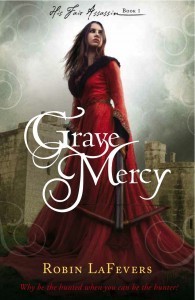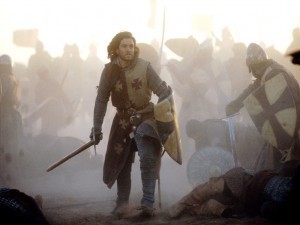R.L. LaFevers's Blog, page 10
March 11, 2012
Author's Note
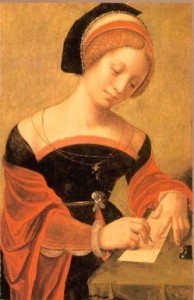 We debated on whether or not to put an author's note in the book, but ultimately decided against it because it was a trilogy, and not everyone likes to be bumped out of the fictional world by learning the true facts behind the story.
We debated on whether or not to put an author's note in the book, but ultimately decided against it because it was a trilogy, and not everyone likes to be bumped out of the fictional world by learning the true facts behind the story.
So I am putting the author's note here on the website. Do be warned that it may contain spoilers, although I will try very hard to keep it from doing so.
All the major historical events and people in Grave Mercy are based on true events, from a twelve year old inheriting the duchy of Brittany, to her having been betrothed to at least a half a dozen suitors in return for the aid in Duke Francis II's ongoing struggle with France. Just before his death, the duke was forced to sign the Treaty of Vergers, which gave France the right to approve any marriage Anne might make. Immediately upon his death, France sent emissaries to Anne's court claiming that the French Regent would act as guardian and oversee both her and her kingdom. That was in direct violation of the Treaty of Vergers.
And so Anne assumed the mantle of her father's long battle for independence from France.
The political intrigue and switching alliances in the book was also historically accurate, although in the interest of not swamping the story—or the reader—I left quite a few additional alliances and machinations out. Suffice it to say there were about twice as many schemes going on in real life as I used in the book, including additional suitors, competing claims for the throne, and additional double crossing.
With the exception of one completely fictional character, all of Anne's councilors in the book are actual historical figures, all of whom betrayed her in real life just as they did in the book, including her tutors Marshal Rieux and Madame Dinan.((Highlight text to view spoilers.)
Anne had five 'natural' siblings, which was a polite word for bastards. The mother of her natural siblings had indeed been the mistress of the former king of France before becoming mistress to Duke Francis and bearing him five children. Gavriel Duval was not among them, for he is a wholly fictional character. Francois however, was one of Anne's knights and did indeed swear fealty to her before a council of barons. One of the fictional liberties I have taken is having Madam Hivern still alive at the time of our story. In real life, she died before Anne was born.
Count d'Albret is also an historical figure. He was described by the chroniclers of his time as fifty years old, large and ugly, with many children from a previous marriage. He was also devious and cunning and by all accounts so repellent to Anne that she ultimately issued an edict proclaiming she would not marry him. For someone so dedicated to her country, this struck me as an extreme measure that made great fodder for the story.
The book takes place on the very cusp of the Middle Ages and the Renaissance. Another writer working in this exact same time period might very well call it the Renaissance. However, since my story focused on the spiritual preoccupations such as patron saints, relics, etc., and they were such hallmarks of the medieval period, I refer to the story as taking place in the Middle Ages.
The castles, the towns, and homes were all researched, although very few maps of the time exist. Or if they did, I did not have access to them. Castles were moving away from the earlier design of one great hall and one giant room for all to sleep in. Privacy, at least for the noble family itself, was coming into vogue.
Over the centuries, as the Church struggled to convert an entire population to Christianity, as a matter of policy they adopted pagan deities as saints, painting over the original myths with their own Christianized narrative. They also built churches on pagan holy sites, and organized their own festivals and celebrations to coincide with earlier pagan celebrations to make them more palatable for the local populace. It has been said that Brittany in particular, fought harder than other kingdoms against the loss of their own deities and form of worship.
While the nine old gods in Grave Mercy did not exist in the exact form they were portrayed in the book, they were constructed from earlier Celtic gods and goddesses, about whom we know very little. I have added a few embellishments of my own.
Sadly, the convent of Saint Mortain does not exist except in my imagination, but the Ile de Seine was known to have been the home of the last nine druidesses who served the old gods and ways and bears a small, ancient chapel built right next to a pagan standing stone.
February 29, 2012
Some Thoughts On Historical Accuracy
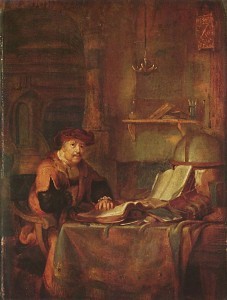 I have been thinking a lot about historical accuracy as I work on these medieval French assassin books so I thought I'd talk a bit about it here.
I have been thinking a lot about historical accuracy as I work on these medieval French assassin books so I thought I'd talk a bit about it here.
But first, a warning: I am not a purist. If you are looking for someone who holds up pristine historical accuracy as the One True Shining Purpose, I am not your girl. For one thing, I am already drawn to the murky, under explored parts of historical periods—their folk beliefs, superstitions, relationship to Other, and their spiritual anomalies—things that most real historians have traditionally steered clear of.
Secondly, I think historical accuracy is an elusive beast, especially the farther back in time you travel. But that very elusiveness is exactly why so many historians tackle time periods that have been written about before: because things change. Sometimes it is the actual information and facts that change—new discoveries are made, new methods of dating or interpreting old facts emerge. But other times it is merely US who have changed, our perspective on history. A great example of this was the influx of histories in the seventies that were told/viewed through the eyes of women or minorities who'd been involved in the historical events, but whose side hadn't yet been told.
There is also great disagreement on a lot of historical concepts and facts. Just trying to define the middle ages or medieval time period for example, can lead you on a long and twisting goose chase. Some declare it ended in the middle of the 14th century, while others claim it ended in 1450, where still others claim it ended in 1492. You can find solid historical arguments for each of those dates. The truth is, you can often find a variety of sources that will support an even wider variety of interpretations.
So which does a writer choose?
The one that best serves the story they are trying to tell.
Some writers are writing in order to convey absolute historical detail and accuracy and take great pride in that, as well they should because it is so tricky. But others (like me) are mostly interested in evoking the sensibilities and flavor of a time period. I don't mean that we slap historical costumes on 21st century characters and calling it historical, but rather we try to explore the mindset and worldview of earlier times, but in a way that is accessible to readers.
The His Fair Assassin books have been challenging, not only because the time period was recorded in such a subjective manner, but because most of the earliest sources are in French! Middle French at that, and I simply wasn't willing to wait long enough to learn that language before writing the story.
What I am doing for this book is dipping my hand in the cauldron of what we know of the events at that time and pulling out those that are most relevant to the story I want to tell. There are vast amounts of historical facts and details I am not even touching—to do so would turn an already huge book into an encyclopedia! But even more important, they aren't relevant to the story itself.
My own guidepost, touchstone, call it what you will is that the history serves the story.
February 25, 2012
The Convent’s Poisons (excerpted from Sister Serafina’s Herbal)
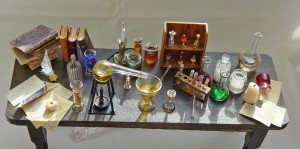
Heretic’s Lament: Quick acting poison for heretics wishing to avoid pain of being burned to death. A deep amber color.
Martyr’s Embrace: (the pale green of new spring grass) excruciatingly painful poison for those wishing to do penance with the act of dying.
The Scourge: (rust colored liquid) This poison corrodes at the internal organs until they are too damaged to work any longer. Almost as painful as Martyr’s Embrace.
Dark Tears: (blood red drops) Causes lungs to fill with fluid and the victim drowns to death.
Bitter Tears: (clear as water) Virtually undetectable except for the bitter taste of victim’s tears.
Amourna’s Woe: (pale lavender liquid) So named for a pair of young lovers who drank the poison jointly when their warring families refused to allow them to wed.
Vengeance: white pearls with slow acting poison.
Matrona’s Curse: (the color of an old man’s piss) A powerful abortifacient which often has the added undesirable effect of killing the mother.
Adruinna’s Snare: This thick honey colored paste is absorbed through the skin. Effective, but inexact.
Mortain’s Caress: (the pale blue of the cold winter sky) An almost pleasant, merciful poison where the victim is overcome by a sense of euphoria as they die.
Night Whisper: A poison that is inhaled into the victims lungs, either in the form of a fine white powder or through candles made of beeswax into which the poison has been mixed. Also suitable for carrying in rings.
Brigantia’s Bane: (the muddy green of a stagnant pool) Eats all the knowledge from the victim’s brain until they become a babbling simpleton with no memory of who they were.
Nocturne’s Malaise: (the color of pale straw) With this poison, the victim simply goes to sleep, forever, until they waste away and die.
The Convent's Poisons (excerpted from Sister Serafina's Herbal)

Heretic's Lament: Quick acting poison for heretics wishing to avoid pain of being burned to death. A deep amber color.
Martyr's Embrace: (the pale green of new spring grass) excruciatingly painful poison for those wishing to do penance with the act of dying.
The Scourge: (rust colored liquid) This poison corrodes at the internal organs until they are too damaged to work any longer. Almost as painful as Martyr's Embrace.
Dark Tears: (blood red drops) Causes lungs to fill with fluid and the victim drowns to death.
Bitter Tears: (clear as water) Virtually undetectable except for the bitter taste of victim's tears.
Amourna's Woe: (pale lavender liquid) So named for a pair of young lovers who drank the poison jointly when their warring families refused to allow them to wed.
Vengeance: white pearls with slow acting poison.
Matrona's Curse: (the color of an old man's piss) A powerful abortifacient which often has the added undesirable effect of killing the mother.
Adruinna's Snare: This thick honey colored paste is absorbed through the skin. Effective, but inexact.
Mortain's Caress: (the pale blue of the cold winter sky) An almost pleasant, merciful poison where the victim is overcome by a sense of euphoria as they die.
Night Whisper: A poison that is inhaled into the victims lungs, either in the form of a fine white powder or through candles made of beeswax into which the poison has been mixed. Also suitable for carrying in rings.
Brigantia's Bane: (the muddy green of a stagnant pool) Eats all the knowledge from the victim's brain until they become a babbling simpleton with no memory of who they were.
Nocturne's Malaise: (the color of pale straw) With this poison, the victim simply goes to sleep, forever, until they waste away and die.
February 15, 2012
It has been a busy couple of weeks here at Chez LaFevers....
It has been a busy couple of weeks here at Chez LaFevers. His Fair Assassin Two is due to my editor Monday morning and I am waaaay farther from the end than I would like to be.
But! There has been lots of cool news and many good things happening. First, GRAVE MERCY received its third starred review from PW! My favorite bit:
"Rich in historical detail, well-realized characters, political machinations, and enticingly prickly scenes between Ismae and Duval, LaFevers's complex tale incorporates magic both sparingly and subtly."
Heh. Enticingly prickly. I like that.
We also learned that it also made #3 on the Spring 2012 Indie Kids Next List! (Thank you, thank you Indie booksellers!!) And boy, there are so many amazing books on that full list that I can't wait to read!
And lastly, I can share the UK cover. It is mostly the same as the US cover, but they've made a few subtle changes. Not just the font—although I do love the font they used—but also in terms of lighting and shadows.
January 30, 2012
Grave Mercy Trailer!
Just wanted to share this awesome trailer for Grave Mercy that my amazing publisher had done. Wow. I have so much love for everything in this trailer, but especially the cool smoke turning into the words and the weapons. ::happy sigh::
January 22, 2012
Why The Middle Ages?
I know that at first glance, the middle ages seems like an unlikely setting for a teen novel, at least until you look more closely. The truth is, the middle ages were a very young society, with nearly half the population under twenty one.

Many of the knights and champions of the day were bloodied in their first battle at fifteen and leading other men to war by sixteen.
The girls were often betrothed by the time they were twelve, and married and bearing children by fourteen or fifteen.
Also, societal ties back then were all about allegiances and oaths and sworn fealty; something anyone whose spent any time in a high school cafeteria is no doubt familiar with.
December 30, 2011
Grave Mercy Collage
I become obsessed with my projects and I need to absorb them through all of my senses. Since I am very visual, I often create a collage of images that helps put me in the world of the story. Here is the collage I made for GRAVE MERCY. It has sat perched above my workstation for the last three years. 
Yes, it's fairly ironic that there are so many old men in there when it is a YA, but what can I say? Most of the men of political power in Medieval France were old. Or at the very least well-seasoned. Some of the images are thematic, the masks for example, and obviously many of the images evoke the decadence of a royal court rather than feature the correct historical costume, but it works to get me in the story when I need a jump start, a touchstone, if you will.
November 20, 2011
Some Book Giveaways!
There is a giveaway here of your choice of any one Theodosia or Nathaniel Fludd book, so a good opportunity to round out the series.
And there is a chance to win a Grave Mercy ARC here .
(There is also a terrific deconstruction of the Grave Mercy cover here , in case you're interested.)
Good luck!
November 19, 2011
More Maps
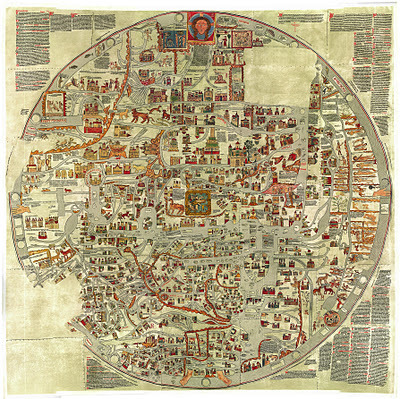
This kind of map is called a mappa mundi, which is a medieval map of the world. This one was made on a number of stitched together goatskins. I am especially fond of the detail at the top and bottom of the map, (warning: large image!) as well as the left and right sides. You can see the head and feet and hands of God as he holds up the world--a reflection of the science of the time.

